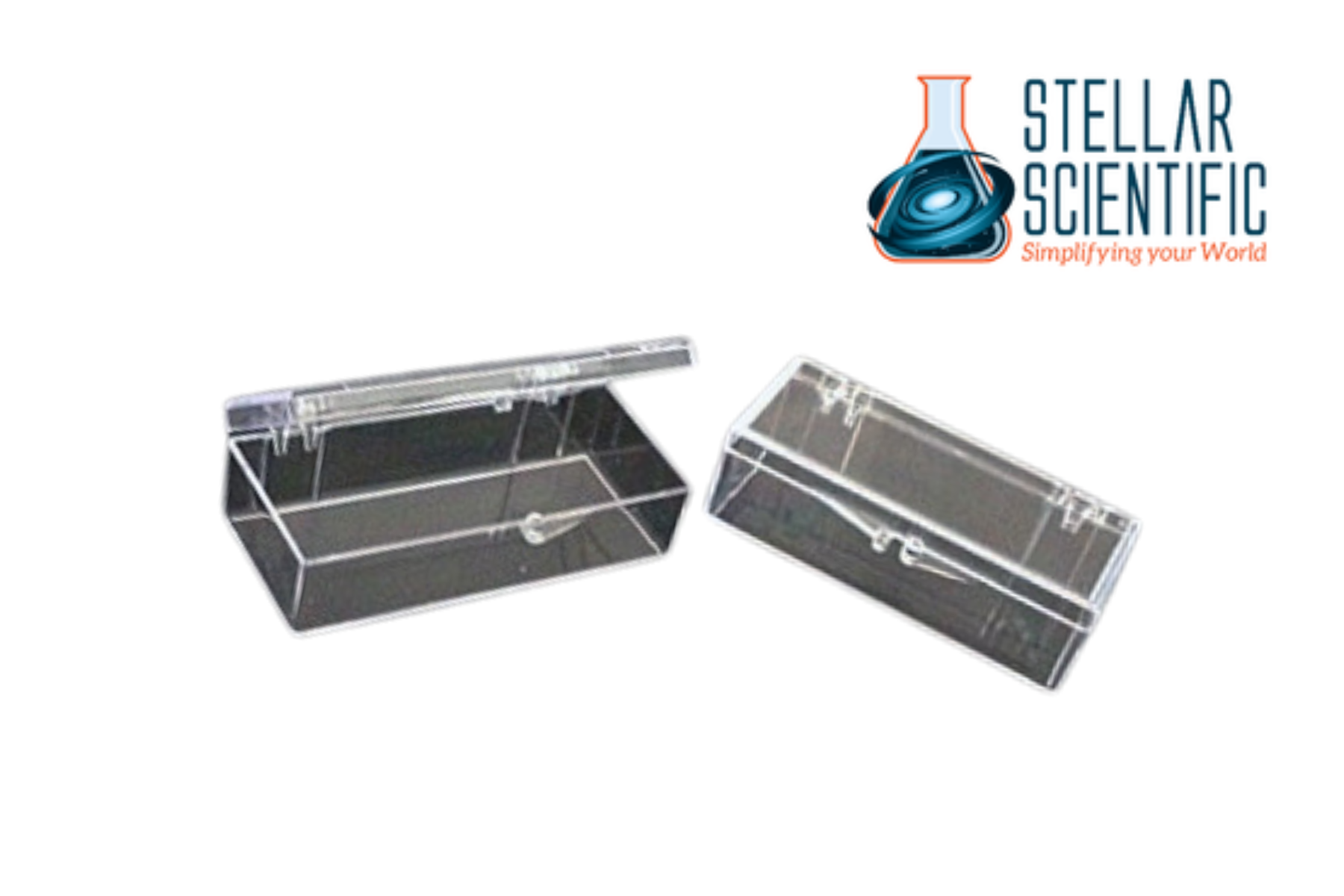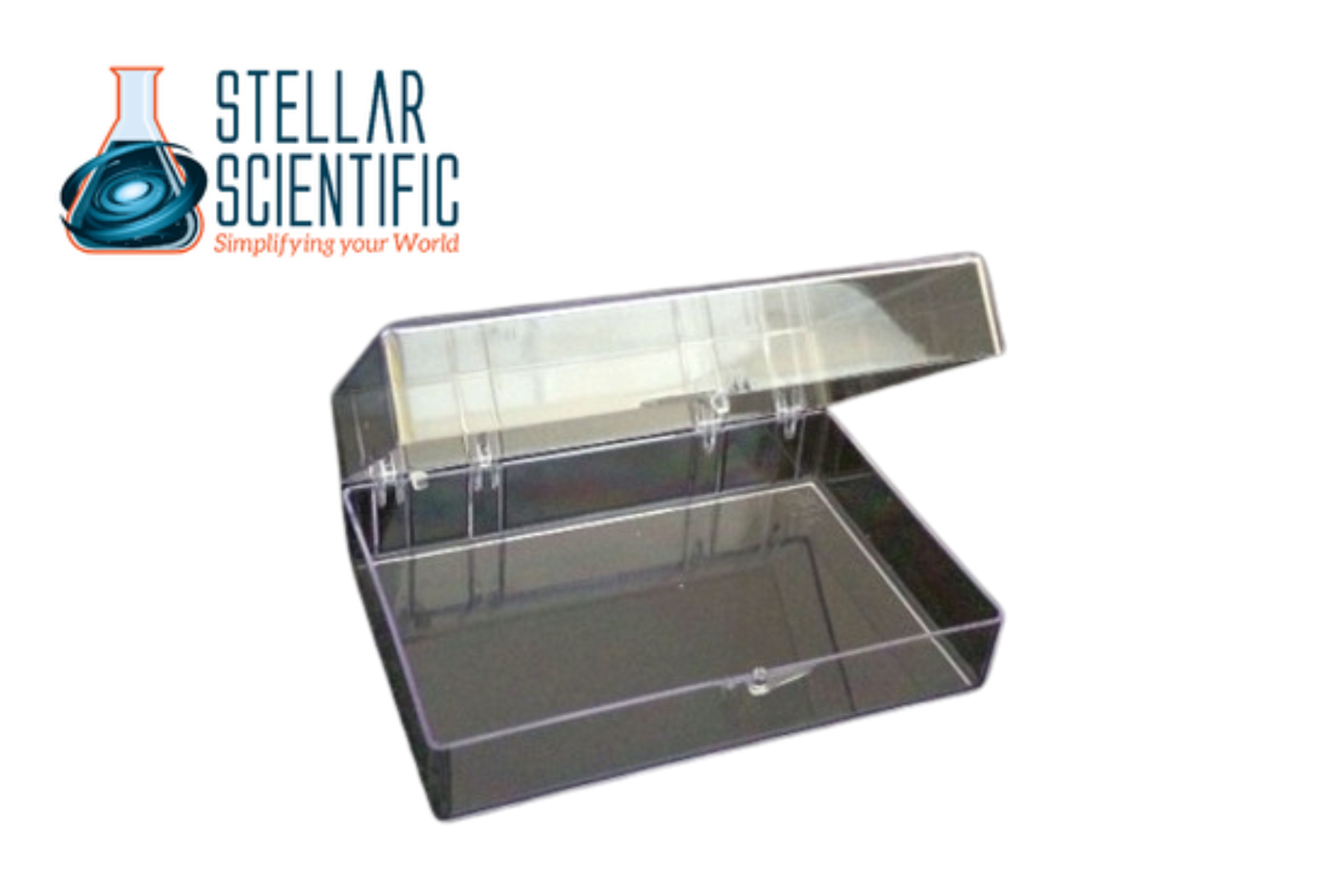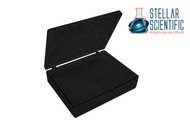Blot Boxes That Keep Your Samples Protected
15th Jul 2025
In any molecular biology or biochemistry lab, the integrity of your samples is everything. When working with sensitive membranes during Western, Northern, or Southern blotting, it’s essential to use tools that preserve sample quality while ensuring experimental consistency. One of the most reliable tools for this purpose is the blot box.
Blot boxes are specially designed containers that allow for efficient hybridization, incubation, and washing of membranes used in blotting applications. They play a key role in protecting your samples from contamination, minimizing reagent waste, and supporting consistent results from one experiment to the next.
Choosing the right blot box is more than just a matter of convenience; it's about ensuring the reliability and reproducibility of your lab’s results.

What Are Blot Boxes?
Blot boxes, also known as hybridization or incubation boxes, are plastic containers designed for handling membranes during blotting procedures. They are typically made from durable, chemical-resistant polymers like polycarbonate or polypropylene and are available in various sizes to accommodate different membrane dimensions.
Their primary purpose is to provide a controlled environment for incubating membranes with probes or antibodies. Proper blot boxes ensure minimal reagent use, even distribution of solutions, and reduced background signal factors that directly influence the quality of the blot.
Why Blot Boxes Matter
1. Sample Protection
Blotting membranes can be extremely delicate and prone to contamination or damage if handled improperly. A good blot box protects your membrane from exposure to airborne contaminants, evaporation, and accidental physical damage.
The snug-fitting lids of blot boxes help maintain solution levels during lengthy incubations or wash steps, ensuring samples remain submerged and evenly exposed to reagents.
2. Efficient Use of Reagents
Western blot boxes are designed to minimize the volume of antibody or probe solutions required during hybridization. Unlike large open trays, which waste valuable reagents, blot boxes confine liquid to a smaller surface area, allowing for full membrane coverage with less solution.
This not only reduces costs but also enhances signal clarity by maintaining an optimal concentration of reagents.
3. Uniform Distribution of Reagents
The flat bottom and smooth interior surfaces of blot boxes encourage even distribution of liquids, ensuring that every part of the membrane receives equal exposure to antibodies or probes. This consistency is crucial for achieving reliable band development and accurate quantification.
4. Ease of Handling
Blot boxes are typically designed with rounded edges and non-stick surfaces that make them easy to clean and handle. Many models include lids with secure closures to prevent spills, even during rocking or agitation. Their transparency allows users to visually monitor membrane coverage without opening the box unnecessarily.
Choosing the Right Blot Box for Your Lab
When selecting blot boxes for your laboratory, there are several factors to consider that will impact their effectiveness and suitability for your specific workflows.
Size and Capacity
Blot boxes are available in various sizes to accommodate different membrane formats, from mini blots to full-sized sheets. Consider the size of the membranes you typically use and whether you need single or multiple membrane capacity in each box. Using an appropriately sized box helps minimize reagent waste and ensures optimal exposure.
Material Composition
Most high-quality blot boxes are made of polypropylene or polycarbonate, which are known for their resistance to chemicals and temperature variations. Make sure the material is compatible with the reagents you commonly use, such as detergents or blocking buffers. Autoclavable models are beneficial for applications requiring sterile conditions.
Compatibility With Agitation Equipment
If your blotting protocol includes shaking or rocking during incubation or washing, ensure your blot boxes are compatible with your lab’s equipment. Look for boxes with secure lids and stable bases to prevent tipping during movement.
Stackability and Storage
For labs handling multiple blots simultaneously, stackable blot boxes can save valuable bench and storage space. Some designs feature interlocking lids or nesting capabilities that make it easier to manage high-throughput workflows.
Reusability vs. Disposable Options
Reusable blot boxes are cost-effective over time and suitable for most labs. However, in situations where cross-contamination is a major concern, such as RNA work or radioactive labeling, disposable options may offer greater assurance of sample purity.
Applications of Blot Boxes in Laboratory Work
Blot boxes are integral to many common blotting techniques and procedures:
Western Blotting
Used to detect specific proteins in a sample, Western blotting requires multiple wash and incubation steps. A western blot box ensures the membrane remains fully immersed and undisturbed during primary and secondary antibody incubations.
Northern and Southern Blotting
For RNA and DNA detection respectively, these techniques involve hybridizing labeled probes to nucleic acid sequences on a membrane. Blot boxes help maintain consistent hybridization conditions to reduce background noise and improve signal specificity.
Membrane Blocking
Before applying antibodies or probes, membranes are blocked to prevent nonspecific binding. Blot boxes offer a closed environment to conduct this step effectively, ensuring even application of the blocking agent.
Probe or Antibody Reuse
Some protocols allow for the reuse of antibody solutions. Using blot boxes makes this easier by minimizing the required volume and providing easy access for pipetting and transfer.

Best Practices for Using Blot Boxes
To maximize the effectiveness of your blot boxes, follow these simple best practices:
- Always pre-wet the membrane if required by protocol to ensure even reagent penetration.
- Avoid stacking membranes within a single box unless using separators designed for that purpose.
- Rinse thoroughly between uses, especially when switching between different antibody types or experimental runs.
- Label boxes clearly to prevent mix-ups during busy workflows.
- Inspect for residue or scratches that may interfere with even liquid distribution or introduce contamination.
Supporting Better Blotting Outcomes
Consistent blotting results depend on reliable tools and careful technique. Blot boxes play a behind-the-scenes yet crucial role in the success of molecular detection methods. Their ability to protect samples, reduce waste, and support uniform reagent application can mean the difference between a clean, interpretable result and an unusable blot.
Whether you’re processing a single blot or managing a large batch of samples, investing in high-quality western blot box containers helps ensure that every experiment begins with a solid foundation.
About Stellar Scientific
At Stellar Scientific, we understand the importance of reliable lab tools in achieving consistent, high-quality results. That’s why we offer a curated selection of blot boxes designed to meet the needs of modern labs conducting protein and nucleic acid blotting.
From durable, reusable hybridization boxes to space-saving stackable options, we carry a range of trusted products to support your protocols. Our team is committed to fast shipping, dependable service, and expert support to help you find the right tools for your workflow.

